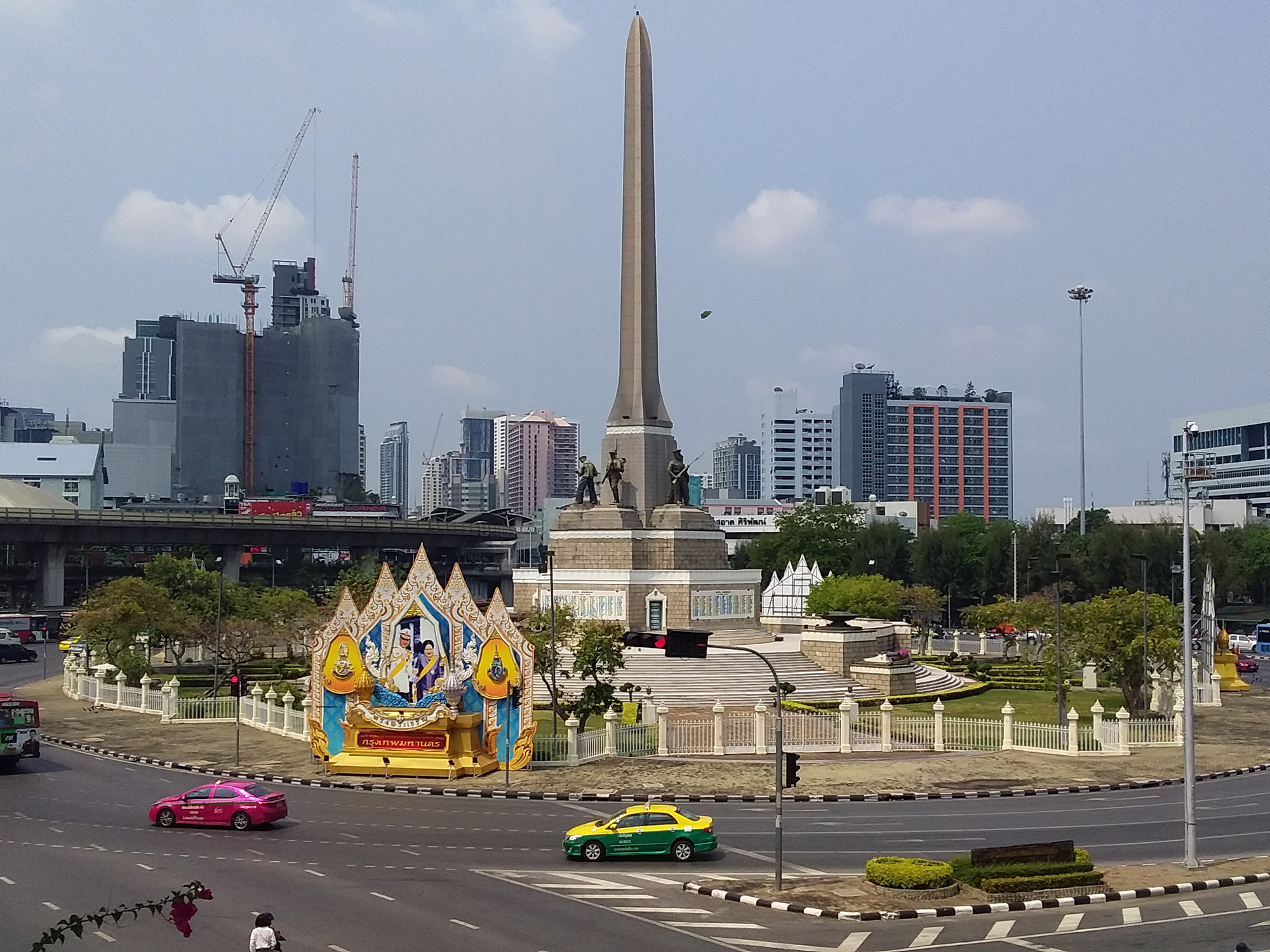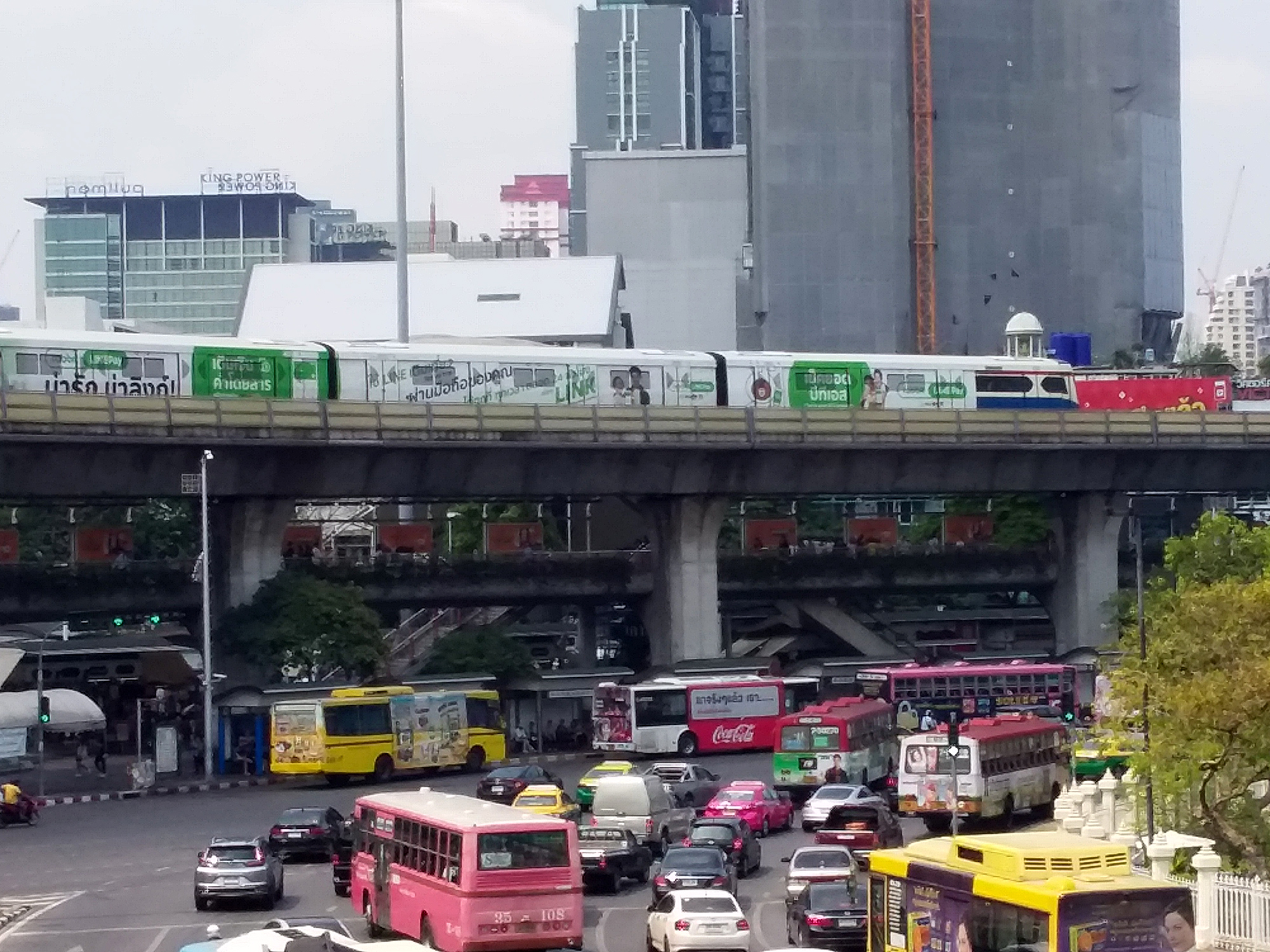|
|

|
|
Bangkok is the capital and most populous city of Thailand. It is known in Thai as Krung Thep Maha Nakhon or simply Krung Thep. The city occupies 1,568.7 square kilometres (605.7 sq mi) in the Chao Phraya River delta in central Thailand, and has a population of over eight million, or 12.6 percent of the country's population. Over fourteen million people (22.2 percent) lived within the surrounding Bangkok Metropolitan Region at the 2010 census, making Bangkok the nation's primate city, significantly dwarfing Thailand's other urban centres in terms of importance. Geography: Bangkok city proper covers an area of 1,568.7 square kilometres (605.7 sq mi), ranking 69th among the other 76 provinces of Thailand. Of this, about 700 square kilometres (270 sq mi) form the built-up urban area. It is ranked 73rd in the world in terms of land area. Bangkok is in the Chao Phraya River delta in Thailand's central plain. The river meanders through the city in a southerly direction, emptying into the Gulf of Thailand approximately 25 kilometres (16 mi) south of thr city centre. The area is flat and low-lying, with an average elevation of 1.5 metres (4 ft 11 in) above sea level. Most of the area was originally swampland, which was gradually drained and irrigated for agriculture by the construction of canals (khlong) which took place from the 16th to 19th centuries. The course of the river as it flows through Bangkok has been modified by the construction of several shortcut canals. History: The history of Bangkok dates at least back to the early 15th century, when it was a village on the west bank of the Chao Phraya River, under the rule of Ayutthaya. Because of its strategic location near the mouth of the river, the town gradually increased in importance. Bangkok initially served as a customs outpost with forts on both sides of the river, and was the site of a siege in 1688 in which the French were expelled from Siam. After the fall of Ayutthaya to the Burmese Empire in 1767, the newly crowned King Taksin established his capital at the town, which became the base of the Thonburi Kingdom. In 1782, King Phutthayotfa Chulalok (Rama I) succeeded Taksin, moved the capital to the eastern bank's Rattanakosin Island, thus founding the Rattanakosin Kingdom. The City Pillar was erected on 21 April 1782, which is regarded as the date of the foundation of the present city. Bangkok was at the heart of the modernization of Siam, later renamed Thailand, during the late-19th century, as the country faced pressures from the West. The city was at the centre of Thailand's political struggles throughout the 20th century, as the country abolished absolute monarchy, adopted constitutional rule, and underwent numerous coups and several uprisings. The city grew rapidly during the 1960s through the 1980s and now exerts a significant impact on Thailand's politics, economy, education, media and modern society. Administration: Bangkok's fifty districts serve as administrative subdivisions under the authority of the BMA. Thirty-five of these districts lie to the east of the Chao Phraya, while fifteen are on the western bank, known as the Thonburi side of the city. The fifty districts have individual district codes. Tourism: Bangkok, or Krung Thep, “the city of angels,” as it is known to its inhabitants is a primary destination for tourists. Many who travel to Bangkok are immediately overwhelmed by the sheer size of the city and the vast number of attractions Bangkok has to offer. Indeed, there is a wide variety of Bangkok sightseeing opportunities spanning more than two centuries of rapid development following the city’s founding in 1782 by King Rama I, the first king of the present Chakri dynasty. Since that auspicious date, Bangkok has swelled to a cosmopolitan, 21st century city of more than ten million inhabitants. While the immensity of the city and its bustling streets can be intimidating at first, those who spend some time in Bangkok are quickly enamored by the myriad of attractions Bangkok contains, from exotic temples, which underscore Thailand’s strong Buddhist history, to modern shopping malls, which make shopping an integral part of any Bangkok holiday. Bangkok features attractions guaranteed to please visitors either simply passing through the city or spending their entire Thailand holiday in Bangkok. Nearly every Bangkok holiday includes a visit to Thailand’s Grand Palace, arguably the premier Bangkok sightseeing attraction. Situated in the heart of Bangkok’s Rattanakosin Island, the gleaming spires of the Grand Palace are conveniently located nearby Bangkok’s most spectacular temples, including the Temple of the Emerald Buddha (Wat Phra Kaeo), the Temple of Dawn (Wat Arun), and Wat Pho, which features an enormous reclining Buddha and was home of the first Thai massage school in the kingdom. These iconic destinations are top attractions to all visitors who travel to Bangkok looking to appreciate Thailand’s unique cultural traditions. In fact, there are more than 400 functioning Buddhist temples throughout the city and it’s not uncommon when you travel in Bangkok to spot saffron robed monks collecting morning alms or traveling throughout the city, including along the Chao Phraya River or the “River of Kings,” which passes alongside the Temple of the Dawn. The winding Chao Phraya is connected by numerous canals from which Bangkok has earned its nickname the “Venice of the East.” When you travel around Bangkok, a cruise on the Chao Phraya River, a visit to a floating market, or an exploration of the city’s “back alley” canals (khlongs) are themselves unique Bangkok attractions. Other historical and cultural Bangkok sightseeing ‘must sees’ include the National Museum, Vimanmek Mansion, and Suan Pakkad Palace, all of which either house fine art or are national treasures in their own right. Beyond Bangkok’s historical district, there are plenty of other attractions that make a Bangkok holiday both enjoyable and memorable. The downtown districts along Silom and Sukhumvit Roads have a convenient electric rail system, including an elevated sky-train and underground subway, that has made travel in Bangkok both easy and enjoyable. Connecting hotels directly to shopping malls and traditional markets, such as Mah Boon Krong Center and Chatuchak (JJ) weekend market, the MRT and BTS systems have literally elevated Bangkok shopping to world-class status. Of course, no Thailand holiday is complete without experiencing Thailand’s vibrant nightlife. Whether, the purpose of your Thailand holiday is to immerse yourself in Thailand’s unique culture or simply to splurge in Bangkok shopping malls, when you travel to Bangkok you are guaranteed a fascinating experience of both old-world charm and modern convenience and luxury. Source: Wikipedia and Tourist Authority of Thailand |

Bangkok Metropolis 

Bang Rak District, Bangkok Metropolis |